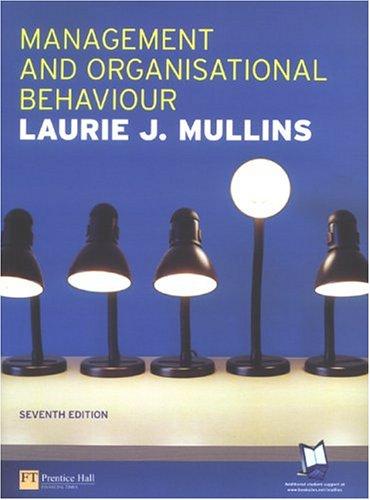Question
This questions is based on the article, The pandemic could give way to an era of rapid productivity growth, published by The Economist on December
This questions is based on the article, "The pandemic could give way to an era of rapid productivity
growth," published by The Economist on December 8, 2020. The article discusses the prospects of
long-term economic growth after the COVID-19 pandemic subsides.
(a) According to the article, some experts on productivity trends seem to be pessimistic about the
prospects of productivity growth in the coming years, especially in the wake of the current pandemic.
What is the basis of such pessimism? Discuss what the article says about the two main groupings of
arguments and evidence offered by the pessimists. [9]
Answer:
(b) The article claims that "productivity is the magic elixir of economic growth". What does this
statement mean? Based on what you have learned in this course and from the article, what would
happen to per capita GDP growth in the long run if labor and capital increase, but there is no
technological progress? Why? Please explain your answer. [9]
Answer:
(c) The data presented in the article suggests that productivity growth in developed countries has
declined after the global financial crisis of 2008-2009 compared to the 1990s and the first half of
2000s. As the article points out, a major "question is why new technologies like improved robotics,
cloud computing and artificial intelligence have not prompted more investment and higher
productivity growth." The article examines three hypotheses that contend to explain this puzzle. What
is the first hypothesis noted in the article? How plausible is this hypothesis in explaining the decline
in productivity despite the advent of new technologies? [9]
Answer:
(d) What is the second hypothesis mentioned by the article as a potential explanation for productivity
slow down despite the new technologies? How plausible is this hypothesis? [8]
Answer:
2
(e) What is the third hypothesis mentioned by the article as a potential explanation for productivity slow
down despite the new technologies? How plausible is this hypothesis? [9]
Answer:
(f) The article claims that the pandemic in 2020 has quickened the pace of technology adoption and may
bring about a period of rapid productivity growth. What is the evidence behind the claim that the
exigencies of hard times may create opportunities for rapid change in later years? What examples of
such a phenomenon are mentioned? How may the process work? What roles can governments play in
ensuring that the potential productivity is realized? [10]
Answer:
(g) Currently the U.S. economy is operating below its production capacity and the Fed has pledged to
continue an expansionary monetary policy until the economy reaches its production capacity.
Consider two scenarios about the productivity trends in the US economy in the next several years: (1)
Continuation of productivity trend observed in the past decade (2010s); or (2) An enhanced
productivity growth compared to the 2010s, as argued in the article. If the Fed maintains its current
pledge and policy, under which of the two scenarios will it start tightening monetary policy earlier?
Why? [6]
Answer:
Step by Step Solution
There are 3 Steps involved in it
Step: 1

Get Instant Access with AI-Powered Solutions
See step-by-step solutions with expert insights and AI powered tools for academic success
Step: 2

Step: 3

Ace Your Homework with AI
Get the answers you need in no time with our AI-driven, step-by-step assistance
Get Started


